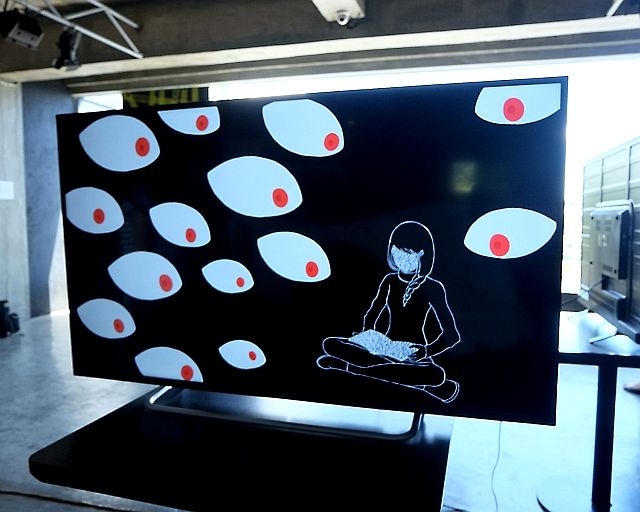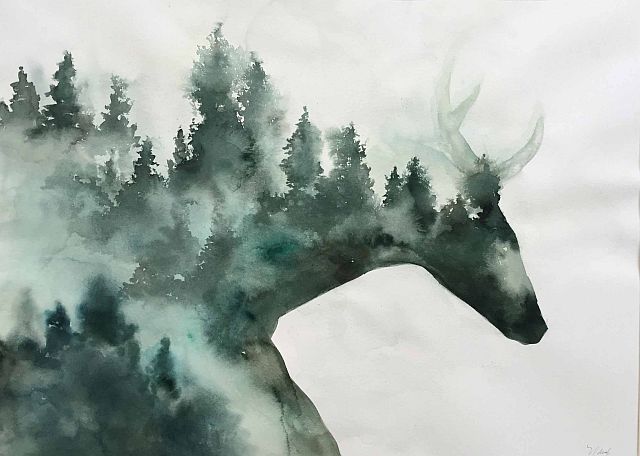
“Quiet” by Piakat Solon”
DO INTENTIONS matter in art? While most of us frown on propaganda, there have been many masterpieces that started as such. For instance, W.H. Auden, member of the communist party of England, wrote pieces to champion his ideology. And Akira Kurosawa, who made movies to promote Japanese virtues.
The value of artist intent occurred to me in “Trilogy,” an exhibit of three young ladies from the Fine Arts school of UP Cebu, held at The Henry Hotel from May 6 to 14.
Narlyn Dura meant to evoke environmental concerns with her dreamlike watercolor depictions of flora and fauna. Hannah Suico’s “experimental typography” were an expression of personal experiences. And there’s Piakat Solon who intended to “disturb” the viewer of her digital works.
But that’s the thing. With visual art, often, that intention has little or nothing to do with how the work is received by the beholder.
The watercolor pieces of Dura seduce me into dreaming of ethereal landscapes. Most striking is “Where Do Wild Things Go?” and I think the concept of showing a barely visible animal here is to warn us of extinction. Still, it doesn’t connect emotionally. I think it has less Green Peace activism in it and a lot more Brontë sisters’ novels. It could be Heathcliff’s horse, for all we know.

“where Do Wild Things Go?”
What I get from Suico is a visual echo of 70s psychedelia. The Gen X can easily relate to her works that give flashbacks of counterculture publications and 7-Up The Uncola ads. Her “Body Piercing Saved Me” brings to mind the iconic pop art image “LOVE” by Robert Indiana, while her “First Light Then Sound” reminds me of Pink Floyd’s “Dark Side of the Moon” album cover.
To me, Solon’s anime-inspired digital art (both the digital print on canvas and the one on the TV screen) is more hypnotic than disturbing. I find myself caught in the rhythm of flashing images. In an almost perverse way I find this calming, meditative even. Since I cannot relate to the Naruto culture, the work “Quiet” makes me think of Japanese cult movies, like the cute Kamikaze Girls and the gruesome The Audition by Takashi Miike.
All three artists have a latent abstract surrealist in them but deliver very different results. Dura’s works stir romantic and mystical longings. Suico’s use of alphabets as springboard for works of reverberating patterns create cerebral stimulation. Solon’s very contemporary Oriental-ism embodies a subdued rebellion against life filled with everyday routine. Her works offer a parallel existence where one can take occasional refuge from the mundane. (Gerard Pareja)

